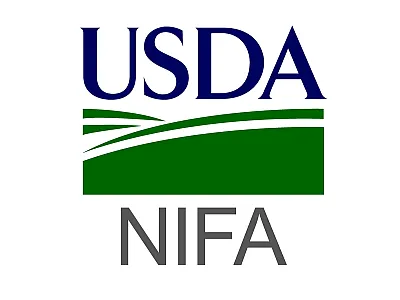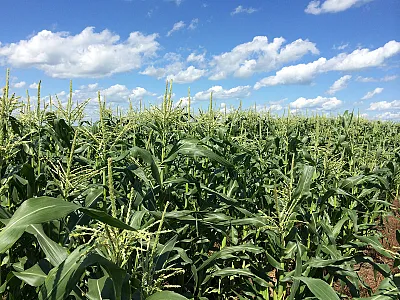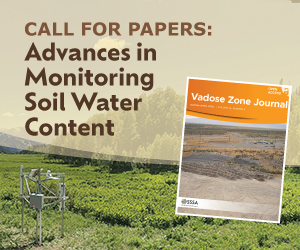The Bitter and the Sweet: Curbing Cadmium in Chocolate and Other Crops
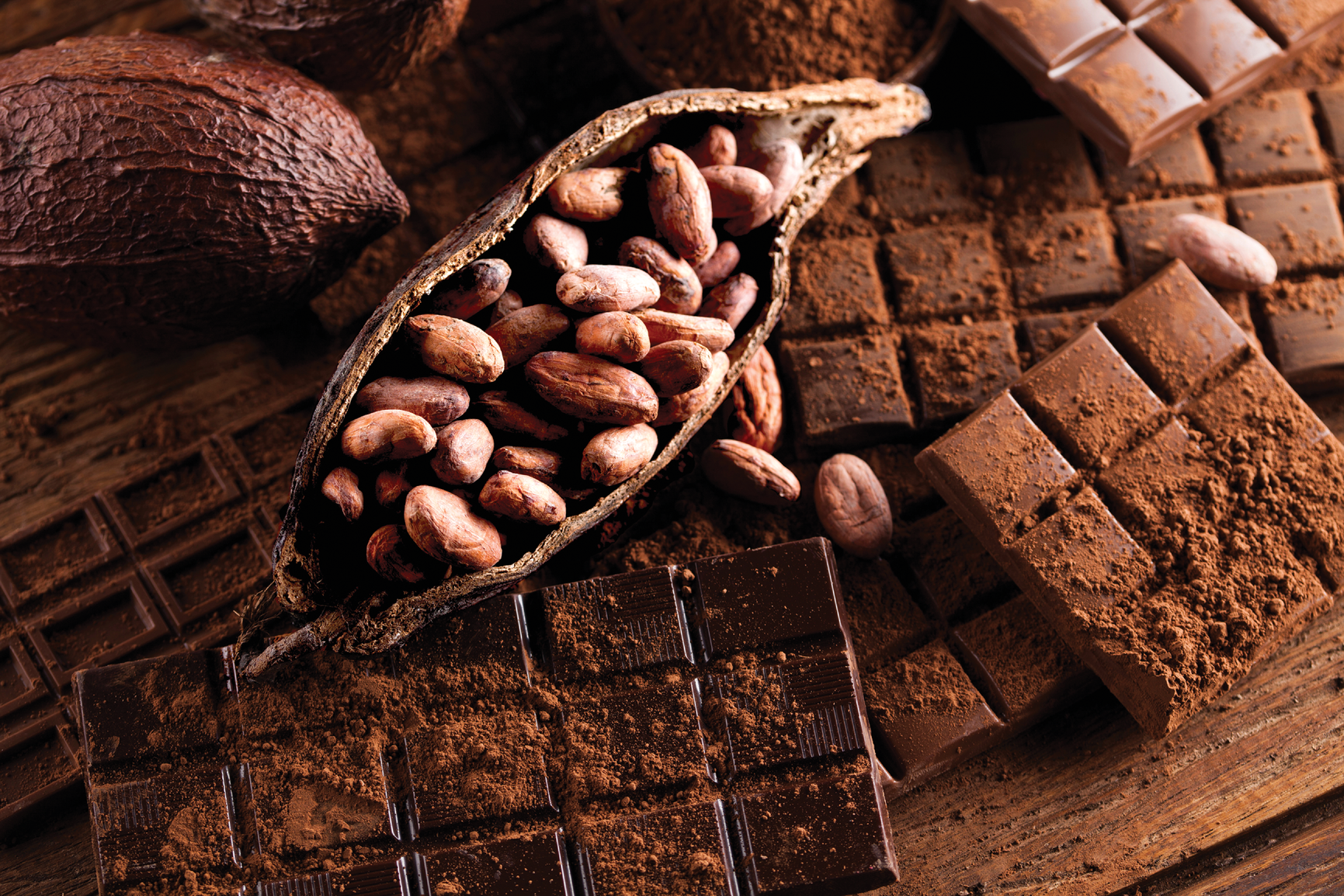
Cadmium is an element that can be toxic to humans. The metal is also present in soils in varying degrees where it occurs naturally and has been added anthropogenically, including in fertilizers. Concerns arise when that cadmium is taken up into plants that people eat, a process influenced by plant types, location, soil characteristics, and management practices.
In recent work, researchers share findings on factors related to cadmium uptake in cacao, wheat, and other crops. Here we compare and contrast that research, looking at how a hodgepodge of cadmium regulations and other factors are affecting growers. We also report on strategies to reduce cadmium levels in the foods we enjoy, from breakfast toast to rice pilaf to holiday chocolate confections.
Warm up the cocoa and unwrap the Kisses: it’s chocolate season (again), with two of the year’s three biggest chocolate holidays—Valentine’s Day and Easter—upon us. From heart-shaped confections to marshmallow-stuffed bunnies, and from nut-filled nuggets to gold-dusted truffles, sweet treats for indulging and sharing abound.
One ingredient they all have in common, of course, is cocoa from the cacao plant Theobroma cacao, a name that fittingly translates to “food of the Gods.” But they also share a less heavenly component, if only in trace amounts: the element cadmium.
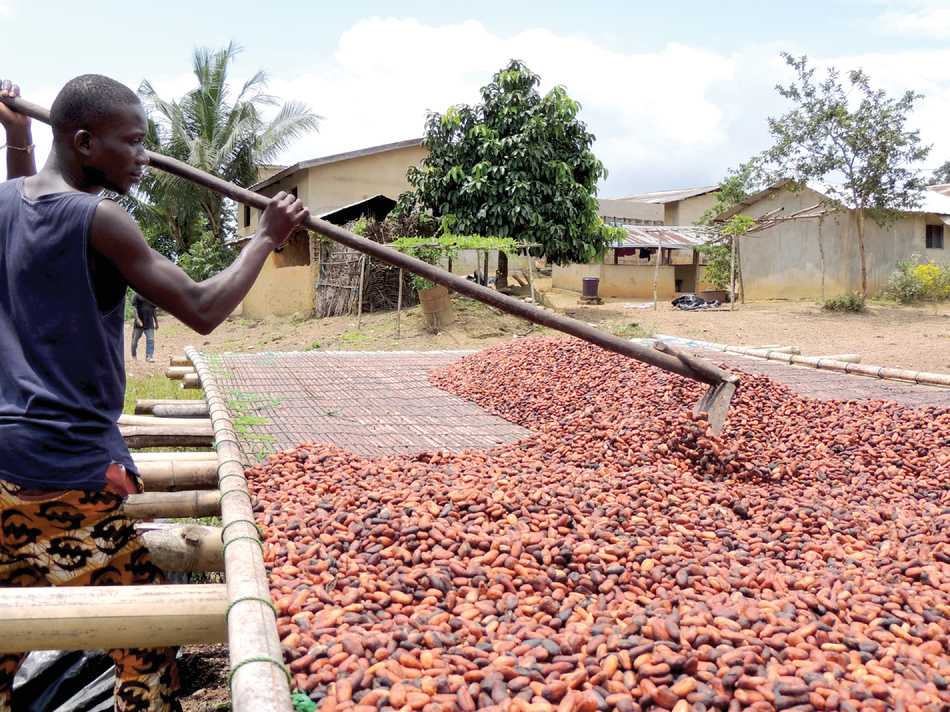
Cadmium, a metal toxic to humans if absorbed in high enough quantities, is found in all soils. So virtually anything you pop in your mouth is likely to contain at least a tiny bit of cadmium, according to SSSA and ASA Fellow Rufus Chaney, a retired USDA research specialist who has studied metals in soils, soil amendments, plants, and livestock-based foods for decades. “Every food contains cadmium,” he says.
Chaney does not mean to alarm you. “Rice is the only food demonstrated to cause human cadmium disease,” he stresses, and then only under unusual circumstances we’ll get to later. Nonetheless, concerns over cadmium in food persist and cut across many sectors, including plant breeding, food production, nutrition, international trade, soil science, economics, agronomy, and food safety. The food industry has taken note.
“They're calling and asking, ‘Where can I get wheat, potatoes, for example, with low concentrations of cadmium?’” says ASA and SSSA member Daniel Strawn, a University of Idaho soil chemist who specializes in trace metals in the environment. “They know what they want.”
Perhaps for no food are these intersections as complex as they are for chocolate, for multiple reasons. One is cacao’s tendency to take up cadmium. Although, as Strawn notes, “It's not like people are eating large amounts of chocolate every day as part of their diet,” the beans do, ounce for ounce, contain more cadmium than many other foods.
Secondly, as the world’s biggest cacao consumer, Europe has a strong voice in the cadmium conversation, and—apart from California’s—their limits are the world’s toughest, particularly for the grade of cacao that ends up in little mouths.
Another reason: chocolate is big business. Americans alone spent more than $21 billion on chocolate in 2021, a sum expected to climb to more than $25 billion by 2026, according to a report by the National Confectioners Association. The association also reports that consumption of fine chocolate, which has higher levels of cacao, is up significantly.
Finally, it’s not all sweet talk in the world of chocolate. Some regulatory bodies are at odds over where to draw the line on cadmium limits, and countries with high-cadmium soils are pitted against those with low-cadmium soils. These clashes play out as consumers grow increasingly anxious over dietary dangers. In one 2020 global survey, respondents reported being more concerned about food safety than health or the environment.
Toward the end of this story, we’ll delve deeper into recent science on chocolate and cadmium—we’re saving that, you might say, for dessert. First, we’ll look at cadmium in food more broadly, with some helpings of rice, wheat, and spinach along the way. And we’ll see what scientists are learning about reducing cadmium levels in crops. Unfurling on U.S. wheat fields, in Asian rice paddies, and across the Amazon Basin, it’s a tale shaped by many forces, of which science is but one.
From Soil to Plant: Nature’s Little Wedding Crashers
All soils contain cadmium. That doesn’t make it a problem. “Most of our farming soils aren't contaminated,” Strawn stresses. “They just have cadmium there naturally. It's part of what's in all soils.”
But shale-derived soils tend to be higher in cadmium. Some industrial processes release cadmium into the environment. And the biosolids, manures, and fertilizers that boost soil health and yields can also contribute cadmium stowaways.
Whether introduced by us or Mother Nature, concentrations of cadmium in soil vary widely, from 0.01 to 300 milligrams per kilogram (mg/kg), Chaney says. In California, parts of the Salinas Valley have higher levels of cadmium than elsewhere in the state. Cacao growers in parts of South America plant in higher-cadmium soils than their African counterparts. Wheat farmers across Idaho and other wheat-growing regions also encounter different levels.
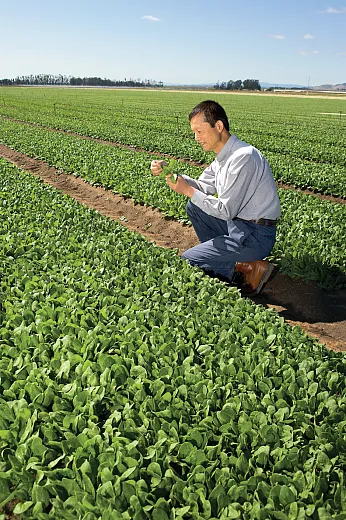
"How does that cadmium get from soil to plant? ... As it turns out, the unwelcome metal acts like a wedding crasher, skulking through the door intended for invited guests only."
How does that cadmium get from soil to plant? After all, while plants need zinc, iron, and other elements, they have no known need for cadmium.
As it turns out, the unwelcome metal acts like a wedding crasher, sneaking through doors intended for invited guests only. “The zinc uptake is through the same transporter as cadmium in all crops except rice,” explains SSSA and ASA Fellow Ganga Hettiarachchi, a Kansas State University (KSU) soil chemist. In rice, cadmium is taken up by the manganese transporter.
But cadmium only manages this trick when it sufficiently outnumbers zinc, an uncommon scenario. “In most soils, zinc is more than 100 times higher than cadmium, and the zinc inhibits cadmium uptake,” Chaney explains.
How much of the cadmium in soil ends up in plants depends on several factors, including the crop, the cultivar, soil properties, and management practices. In the Salinas Valley, for example, farmers apply zinc to outcompete cadmium for crops like spinach, which tends to take up more cadmium than other produce. In addition, organic matter can serve as a kind of bouncer for would-be cadmium wedding crashers, forming bonds with those ions before they have a chance to sneak into the plant.
In areas of Ecuador and Colombia, some farmers contend with not only high cadmium, but also acidic soils, which make cadmium more phytoavailable. “It makes the cadmium flow right into the beans,” Chaney says.
In Idaho, Strawn recently looked at uptake of cadmium in common wheat across different regions and cultivars. As he reported recently in Agrosystems, Geosciences & Environment, (https://doi.org/10.1002/agg2.20288), almost all the wheat tested was within the 0.2 mg/kg cadmium limit for adults set by the World Health Organization (WHO) and the United Nations (UN). In addition, wheat grown in lower-cadmium soils had less cadmium, and some cultivars proved better at excluding cadmium. About one-third of the samples had levels low enough—below 0.04 mg/kg—to meet the European Union’s (EU) strict thresholds for baby food. Strawn dubbed these samples “ultra-low cadmium wheat” and says they could command a higher price. “The food companies are looking for this ultra-low cadmium if you can produce it,” he says. “You should get a premium for that crop because ... it qualifies for a special food production class, in this case for baby food.”
From Plants to People: The Case for Cadmium Caps
Not all the cadmium that creeps into a crop will be absorbed by the person who eats it: What’s phytoavailable isn’t necessarily bioavailable. Two key factors play a role here: The other nutrients present in the food and the other nutrients present in the body eating the food.

The iron in wheat, for example, is fairly bioavailable, which reduces the body’s absorption of the cadmium from that wheat, Hettiarachchi explains. Rice, which is low in iron, zinc, and calcium for human health, is a different story. “You don’t have that protection at the same level from cadmium in rice,” she says.
People who subsist largely on rice suffer a double whammy: They eat a lot of a crop that tends to accumulate cadmium, and their bodies lack important nutrients that could help protect them. “Subsistence rice diets are so low in zinc and iron and calcium that they can absorb 10 times more cadmium than a person on a normal diet,” Chaney says. Iron deficiencies are particularly problematic, he adds, because cadmium is taken up on the iron transporter in the intestine. This explains in part findings of a recent report from the WHO and UN showing that Chinese children ages 4 to 11 have the highest levels of cadmium intake among children in the world.

Cadmium, in short, is complicated, which has led to a multitude of regulations that are both complex and controversial. They are expressed in different ways, including provisional tolerable monthly intake (PTMI), health-based guidance values, micrograms/kilogram of bodyweight, maximum allowable daily levels (MADL), and micrograms/kilogram per day or per serving. Some regulations cap amounts of cadmium in specific foods while others limit how much should be consumed within a time period. “It can be very confusing,” Strawn says.
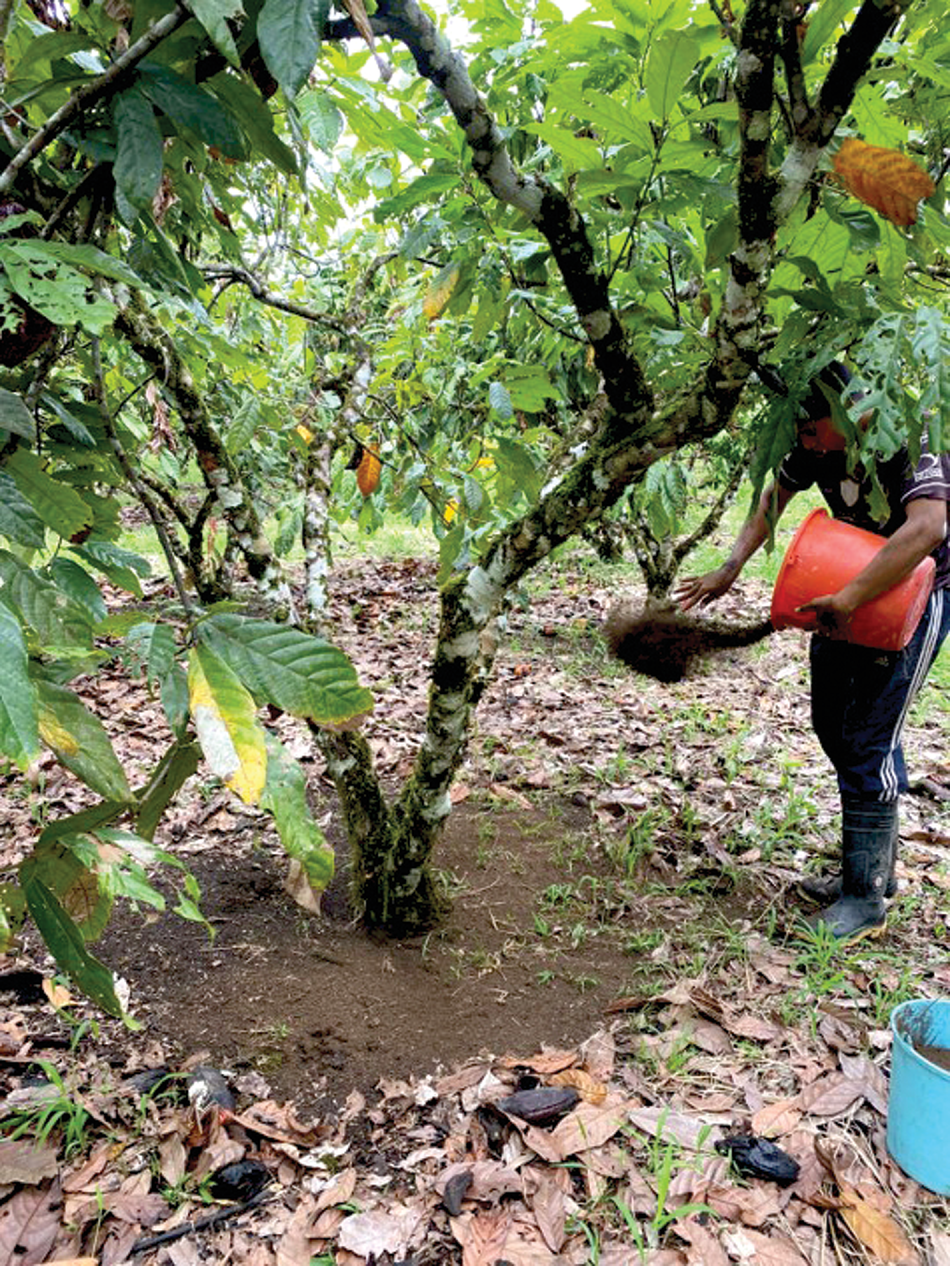
In the United States, for example, the Food and Drug Administration (FDA), USEPA, and the Agency for Toxic Substances and Disease Registry have various recommendations for what is safe to consume. In addition, the FDA in 2021 launched its Closer to Zero campaign, which seeks to reduce arsenic, lead, cadmium, and mercury in foods eaten by babies and young children to “as low as possible.” California is its own special case due to Proposition 65, which requires businesses to warn consumers when their products contain harmful chemicals. The state’s MADL for cadmium exposure for all food is 4.1 μg/day. That threshold has led to spinach recalls, and a 2021 report by an environmental watchdog found multiple instances of spinach exceeding those amounts.
In contrast to the more fragmented U.S. approach, the WHO/UN has drawn up very specific cadmium guidelines. The EU also has its own regulations, and the two sets don’t always agree. Together, the WHO and the UN’s Food and Agricultural Organization wrote the book on food safety.
Dating to the early 1960s and regularly revised, the Codex Alimentarius is a list of voluntary standards agreed upon by member states. These include a recommended limit of 58.3 μg/day, twice as high as the EU’s 25 μg/day limit and almost 15 times higher than the California limit. The Codex also includes limits for specific foods like legumes (0.1 mg/kg), wheat (0.2 mg/kg), and rice (0.4 mg/kg). Recently, the organization proposed revising its limits for cadmium in chocolate to 0.3 mg/kg for chocolate containing up to 30% cocoa solids and 0.7 mg/kg for chocolate containing 30–50% cocoa solids. The proposal has highlighted how controversial these caps can be: While the EU criticized the limits as too lax (the EU’s are much lower), Ecuador strongly advocated for them.
But given Europe’s huge appetite for chocolate, its limits often prevail. “These are large food producers,” Strawn notes. “They don't change the recipe for every country, and so if the European Union regulations require wheat to be below 0.2 mg/kg in total cadmium, most large producers are going to respond to that for their whole product line.”
Chaney argues that for all their PTMIs and MADLs, policymakers miss the mark by counting all the cadmium in a food when less than half of it, at most, is actually bioavailable. According to several studies, there is little correlation between how much high-cadmium foods people eat (except for rice) and levels of cadmium in their blood, assuming healthy diets, he says.
Hettiarachchi agrees. “I think it's time for us to look not just at concentration,” she says, “We need to look at the speciation, as well, because that's going to determine whether that cadmiu —or that lead or arsenic—is going to dissolve and be able to be absorbed by a human body when it is passing through it.”
As it stands, cacao grown in some high-cadmium soil areas of South America doesn’t meet the stricter regulations. Scientists like SSSA member Eduardo Gutierrez are trying to learn what can be done about that.
Cadmium in the Cradle of Cacao
For Gutierrez, chocolate isn’t just delicious: It’s personal. A native of Ecuador, he learned all about the crop on his grandfather’s 60-acre cacao farm: how to open the pods, remove the seeds, and savor them.
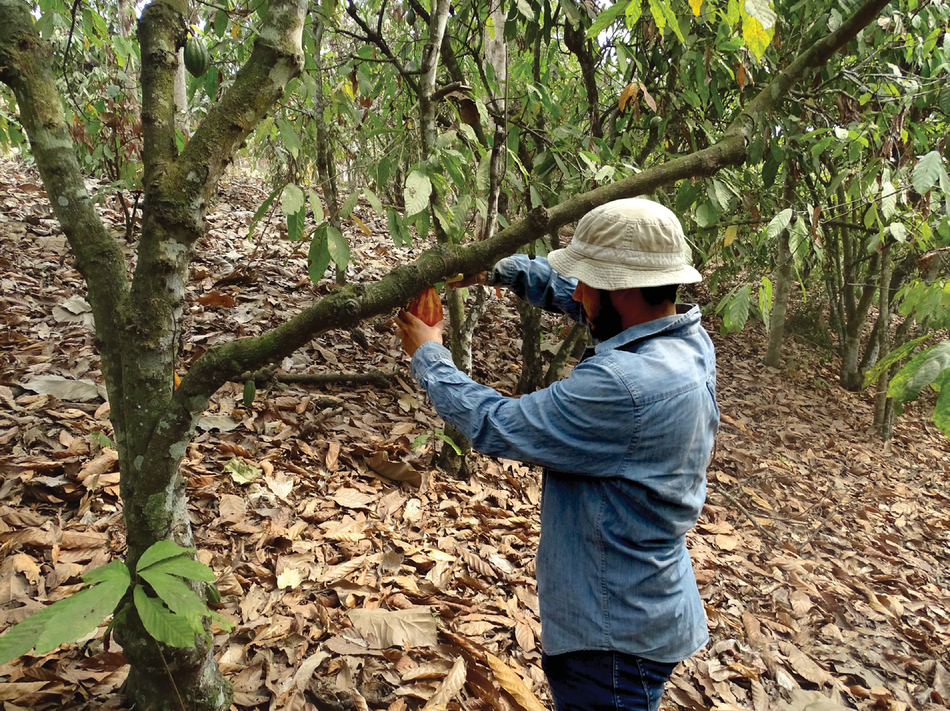
“They have an incredible flavor,” says Gutierrez, who prefers an Ecuadoran brand of fine chocolate that features a passion fruit flavor—his favorite. It’s no surprise the country produces some of the world’s best chocolate: After all, it’s the cradle of cacao. The earliest known use of cacao occurred there more than 5,000 years ago, and the crop was first cultivated in the area, according to studies. Today it’s one of the country’s top crops with more than 327,000 metric tonnes harvested in 2020.
“We know how to produce good quality cacao. We know how to produce a big amount of cacao,” Gutierrez says. “But we have a big problem ... We have some areas with an elevated concentration of cadmium in the cacao.”
Gutierrez has taken on that problem. A Ph.D. candidate in Hettiarachchi’s soil chemistry lab at KSU, he recently took a deep dive into how compost can curb cadmium uptake in the plant. For the experiment, he and his colleagues surface-applied compost in different amounts to soils on four Ecuadoran cacao farms. After a year, they examined soil and plant leaves and bean samples to shed light on how that compost impacted soil chemistry and cadmium uptake.
In Frontiers in Environmental Science and at the Societies’ 2022 Annual Meeting (https://bit.ly/3YBB8B7), Gutierrez reported the results. As expected, the compost reduced cadmium levels pretty much across the board. But it worked better under certain conditions. The team divided up the cadmium in the soil samples by the compound the metal had bound to and then compared these to the cadmium in the cacao seeds and leaves. Some extractants, they confirmed, like potassium nitrate, tend to release cadmium proportional to the plant while others, such as nitric acid, dissolve most of the total cadmium in the soil.
The researchers also zoomed in on humic and fulvic acids in the soils. Their data suggested that in soils with more fulvic acid, less cadmium was taken up by plants. For example, the cadmium
extracted by nitric acid showed a significant positive correlation to the cadmium associated with
fulvic acid while both fractions showed a significant negative correlation with cadmium in cacao
tissues.
“By adding the compost, we were able to increase fulvic acid much more, so that that increase was high enough to negate any kind of negative effect due to enhanced solubility,” explains Hettiarachchi, a coauthor on the paper. “As a net effect, we saw reduction in cadmium in leaf and cadmium in beans.”
The data, Gutierrez says, suggest that better, more mature compost with higher fulvic and humic acid contents may be key for lowering plant cadmium with fulvic acid playing a particularly influential role.
But applying amendments of any kind in cacao orchards is challenging, given those shallow roots. In fact, in a 2022 report coming out of California, a team of experts expressed doubt that composting could help high-cadmium cacao regions any time soon, due to cost and availability of quality composts in rural areas. The report, compiled after tests found cadmium in excess of state limits in products sold there, concludes that many soil amendment recommendations have not been shown to be effective at scale and that it’s unclear how they would be implemented if they ever were found to be effective.
Chaney, one the four experts behind the report, doesn’t question that the right amendments can curb cadmium in cacao. He notes that a Trinidadian colleague, after applying a slurry of zinc or hydrated lime to soil in a cacao orchard via a backpack-mounted pump, significantly reduced cadmium in the plant. But such a labor-intensive process, he says, is impractical.
For that reason, the California report advises chocolate producers who need to meet strict limits to avoid cacao grown in high-cadmium regions altogether, especially for fine chocolate with its higher cacao content. The recommendation doesn’t distinguish the 60% of the chocolate liquor from Latin America and the Caribbean that exceeds the trigger from the 40% that doesn’t.
“Industry just wants low-cadmium chocolate beans,” Chaney explains. “They have the power to analyze and decide where they're going to purchase.”
Given existing cadmium limits, there are no quick fixes, Chaney says. But, he adds, there are promising long-term approaches.
Plant Breeders to the Rescue
A few decades ago, another cadmium conundrum was playing out far from the Amazon Basin. In the northern Great Plains, nearly all U.S. durum wheat had double the cadmium concentration of common wheat. Then, as Chaney recounts in a 2008 paper, a Canadian breeder identified a part of the plant’s genome that carried the trait associated with grain cadmium. The gene that was eventually pinpointed, HMA3, controls the pumping of cadmium into the vacuoles of root cells, acting like a tiny metal detector that keeps cadmium out of the plant leaves and grain. The discovery led to the development of low-cadmium durum wheat cultivars in Canada and the U.S. Today, most U.S. and Canadian durum wheat has the low cadmium gene, Chaney says.
The approach has led to similar efforts for other crops. Asian scientists are tweaking this gene in rice, so that it keeps on pumping, according to Chaney. “There's no cheaper way for society in general to reduce cadmium in food than to use overexpression of HMA3,” he says. Making changes to the rootstock genotype could offer the best genetic approach for cacao, he adds.
“You could make all future chocolate trees have very low cadmium,” Chaney says. “That's a good
solution that could be achieved in 20 years.”
In the meantime, scientists, farmers, and food producers continue to experiment with solutions, agronomic and otherwise. These include exploring new, non-edible uses for cacao, for example, or mixing high- and low-cadmium batches of cacao to create products that still meet cadmium limits.
Although solutions may also originate in food production, marketing, policymaking, and other sectors, Hettiarachchi hopes that science will always come first, particularly as some push for ever lower limits.
“I do not necessarily support very stringent regulations, and assuming low is always better,” says Hettiarachchi, whose latest project tests if soil amendments can lower blood lead levels in Kansas City children. “I think regulatory bodies need to consider the science and then strongly consider, ‘Do we need to go this low? And how practical is it to achieve that?’
“It doesn't mean that we should not try to minimize it,” she continues. “By all means, I spend quite a lot of my time doing research to minimize soil contaminant transfer. But I think we need to look at the practical aspect as well.”
Dig Deeper
To find out more about the recent research highlighted in this story, please see the following:
Journal Articles
“Cadmium Concentrations in Idaho Wheat Grain and Soil,” published in Agrosystems, Geosciences & Environment: https://doi.org/10.1002/agg2.20288
“Comparative Study on Changes in Cd Accumulation and Ionome Between Rice and Spinach: Impact of Zinc Ion Activity,” published in the Journal of Environmental Quality: https://doi.org/10.1002/jeq2.20418
Annual Meeting Presentation
“Cadmium (Cd) Fractionation in Soils Affected by Organic Matter Application: Transfer of Cadmium to Cacao (Theobroma cacao L.) Tissues”: https://bit.ly/3YBB8B7
Text © . The authors. CC BY-NC-ND 4.0. Except where otherwise noted, images are subject to copyright. Any reuse without express permission from the copyright owner is prohibited.







